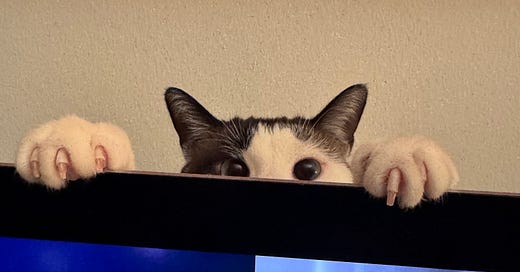The Ego Behind the Lens (and Why I Never Wanted to Be a Photographer)
Photography has always been present in my life, but I’ve never felt comfortable calling myself a “photographer.”
Photography has always been present in my life, but I’ve never felt comfortable calling myself a “photographer.” Not because I don’t use a camera — I do, constantly — but because the culture around photography often feels disconnected from what the craft should truly be: a practice of humility, attention, and responsibility. Too often, photography becomes a tool for self-promotion rather than a way of understanding the world.
To me, photography isn’t about showing who took the photo. It’s about what is seen. It’s about being present, observing without distortion, and honoring what unfolds in front of the lens. A good photograph doesn’t scream the name of its author — it lets the subject breathe. That’s why I believe photography, when done honestly, is an act of service.
At TMN, we try to pass this perspective on to the young people who join our platform. We don’t encourage them to become “content creators” or “photographers” in the trendy, social-media sense. We invite them to become documentarians of their time — to notice, to question, to narrate. We want them to see photography as a way to connect with reality, not to construct a performance around themselves.
Our position is clear: we’re not here to feed the egos of young people who “want to be photographers.” We’re here to help them learn a profession and approach it with humility. Photography, for us, is not about who is behind the camera, but about what and why it is being captured. The focus must be on the subject, not the self.
True photography should be free of ego. Otherwise, it stops being photography and becomes something else — a kind of cartography of the self, where the camera maps personal ambition onto the lives of others. That’s not storytelling. That’s self-projection. A common example of this shows up on social media: someone posts a powerful image — often of hardship, protest, or daily life in a vulnerable place — and a comment appears beneath it: “Thank you, photographer, for showing us what we would never see otherwise.” On the surface, it seems like praise. But the focus has shifted. The subject disappears; the photographer becomes the hero. The post turns into a stage, the caption becomes a spotlight. That’s what I mean by visual ego.
This is why at TMN we are careful with how we teach photography. We don’t believe in sending young people into communities with a camera and telling them to “capture stories.” We believe in building context, awareness, and empathy. Before pressing the shutter, they must understand: Who is this for? Why am I telling this? What does it mean?
This approach might not be flashy. It may not result in viral images or personal branding opportunities. But it produces something more valuable: depth. And through that depth, the possibility of trust. A photograph can be a bridge, or it can be a billboard. We choose the bridge.
As more young people enter the world of visual storytelling, we hope they’ll resist the pressure to make everything about themselves. Not every photo needs a caption that starts with “I.” Sometimes the most powerful work is the quietest — the one where the photographer disappears, and only the story remains.





